MARKETING
How to Leverage the 5 Stages of the Customer Buying Cycle for More Sales

Let’s face it – there are many marketing tactics that boost conversions. However, to make your marketing effective, leveraging the customer’s buying cycle is the key to a successful online business.
Understanding a customer’s buying cycle is how you can have the right marketing for a successful commerce site.
What is the buying cycle?
The buying cycle, also known as a sales cycle ;is a process consumers go through before they make a purchase. The buying cycle is used to help businesses market and sell to consumers by knowing what to market to consumers. The buying cycle helps with creating content and closing sales for new and recurring consumers.
Online Buying Cycle
The online buying cycle is very similar to the original buying cycle; however the key difference is the online buying cycle occurs online. Because it is online; many ecommerce sites and brands will utilize social media platforms and email marketing as marketing tools to help market and sell to consumers and generate leads back to their ecommerce site. The buying cycle and online buying cycle will go through the five stages of closing a sale.
5 Stages of the Customer Buying Cycle
You can look at a customer buying cycle as a customer’s purchasing cycle. ;Many customers go through stages during their purchasing process to educate themselves before they either make a purchase. There are five stages that you have to consider:
1. Awareness
Awareness is the first stage in a customer’s buying cycle when customers realize that they have a problem that needs a solution. ;
A company will be able to reach the target customers given the right marketing strategies and campaigns.
For example, a customer is trying to lower plastic waste from water bottle usage. A customer then sees an ad for a water filter. The problem the customer is facing is met with a solution and now the next stage of the customer buying cycle begins.
2. Consideration
This stage is where the prospect is considering their options and ;your company can provide multiple solutions for a customer. As an ecommerce site, this is where your marketing, sales team, and products come in.
In this stage, you can provide detailed information to explain how your product will help solve their problem. To go back to our example, once the customer clicks the ad and lands on your site, you can list the benefits of the water filter, such as cleaner water, more cost effective than buying bottled water, and gives you a good boost in health. ;Once the customer understands that this product is what they need to solve their problem, ;they will move onto the next stage.
3. Intent
In this stage, a salesperson aims to earn the trust of potential customers. Whether you tap them emotionally or logically, this is the time where a salesperson convinces the potential buyer that their product is the best solution for their needs. You can accomplish this through reviews from existing customers, highlighting the benefits of the product, or through a social media campaign that creates a feeling within the customer. Once the customer is convinced and has seen proof that the product works, we move on to the next stage.
4. Purchase
At this point, your customer is ready to purchase the solution for their needs. While your customer is in this stage, you need to ensure that your pricing is reasonable and you make the buying process as simple as possible.
When the customer purchases, that is not the last step in the customer buying cycle. You don’t want the customer to be a one-time buyer. You will need to manage the customer’s relationship with your site to make them a returning customer. ;Maintain contact with the customer on their problem solving journey to make sure ;that the product works properly and that they are satisfiedThe purchase is just the start of a relationship with a customer; building a relationship ;keeps them in the buying cycle.
5. Re-purchase (Renewal)
The final stage of the buying cycle is repurchase of your product or service. This is where you manage your relationship with the customers. In the previous stage, we touched on the importance of making sure that the customer and seller have established a good rapport ;since this will encourage the customer to repeat business . To get to repurchase, it’s imperative that the customer is happy and satisfied. In addition, in this stage, you can ask ;a customer for a review or a testimonial on how this product or service helped them with their needs.
Create Targeted Content for Each Stage
Now that you know the breakdown of the five stages of a customer’s buying cycle, it’s time to start making the most of it. To get started, you need to answer the questions which are related ;to each stage. But how do you know what your customers are searching ;for to gather information? The answer lies in search queries.
;Look at this example:
- “flat screen tv” – This is a generic term that customers in the Awareness or Consideration stage use. “compare flat screen tvs” – The desire to compare products indicates this customer is further along in the cycle, such as the Consideration or Preference stage.
- “sony 42” lcd” – This a very specific product query indicates that a shopper is much further into the buying cycle, now likely evaluating prices (right before the Purchase stage).
The next step is to create content that moves customers closer to purchase. For example, look for keywords that are related to the Awareness and Consideration stages. Using the previous example, you can provide a guide to selecting the perfect flat screen TV.
For the Preference/Intent stage, leveraging customer testimonials, providing specification sheets and telling your brand story will help push prospects closer to the Purchase stage, which is the perfect time to utilize a PPC ;ad with text that entices them to buy. To LeadL them towards Repurchase, you can send monthly newsletters with helpful tips and tricks . That way it will keep your brand on the top of their minds.
Make Content Available Through the Right Channels
Of course, the content you share is fully dependent on the product you offer and the profile of your customers, but there are basic commonalities on how to market in each stage of the buying cycle:
- Awareness: For the majority of ecommerce sites, this is all about being found via search engine marketing, particularly PPC and SEO.
- Consideration: Once customers find you in search engines, keyword-tailored landing pages are essential. . You can also use comparison charts that highlight the key selling points to help you stand out from the competition.
- Preference/Intent: Your website should do the talking here, especially your product descriptions and overall branding. This is a critical stage to capture contact information.
- Purchase: Get your coupons and discounts out there, whether it’s through your PPC ad text, a pre-sales email, or social media .
- Repurchase: Keep in contact with your customers via scheduled emails, social media, and personal outreach. Your customers are your best growth opportunity.
Create a Meaningful Customer Buying Cycle
While it’s common for online business owners to always focus on the sale, it’s important to remember that your flock of customers are scattered across the field. By herding them through the right gates using your marketing, you’ll be able to enjoy a much more dependable customer pipeline.
Editor’s note: This post was originally published in July 2011 and has been updated for comprehensiveness.
MARKETING
YouTube Ad Specs, Sizes, and Examples [2024 Update]
![YouTube Ad Specs, Sizes, and Examples [2024 Update] YouTube Ad Specs, Sizes, and Examples](https://articles.entireweb.com/wp-content/uploads/2024/06/YouTube-Ad-Specs-Sizes-and-Examples.jpg)
Introduction
With billions of users each month, YouTube is the world’s second largest search engine and top website for video content. This makes it a great place for advertising. To succeed, advertisers need to follow the correct YouTube ad specifications. These rules help your ad reach more viewers, increasing the chance of gaining new customers and boosting brand awareness.
Types of YouTube Ads
Video Ads
- Description: These play before, during, or after a YouTube video on computers or mobile devices.
- Types:
- In-stream ads: Can be skippable or non-skippable.
- Bumper ads: Non-skippable, short ads that play before, during, or after a video.
Display Ads
- Description: These appear in different spots on YouTube and usually use text or static images.
- Note: YouTube does not support display image ads directly on its app, but these can be targeted to YouTube.com through Google Display Network (GDN).
Companion Banners
- Description: Appears to the right of the YouTube player on desktop.
- Requirement: Must be purchased alongside In-stream ads, Bumper ads, or In-feed ads.
In-feed Ads
- Description: Resemble videos with images, headlines, and text. They link to a public or unlisted YouTube video.
Outstream Ads
- Description: Mobile-only video ads that play outside of YouTube, on websites and apps within the Google video partner network.
Masthead Ads
- Description: Premium, high-visibility banner ads displayed at the top of the YouTube homepage for both desktop and mobile users.
YouTube Ad Specs by Type
Skippable In-stream Video Ads
- Placement: Before, during, or after a YouTube video.
- Resolution:
- Horizontal: 1920 x 1080px
- Vertical: 1080 x 1920px
- Square: 1080 x 1080px
- Aspect Ratio:
- Horizontal: 16:9
- Vertical: 9:16
- Square: 1:1
- Length:
- Awareness: 15-20 seconds
- Consideration: 2-3 minutes
- Action: 15-20 seconds
Non-skippable In-stream Video Ads
- Description: Must be watched completely before the main video.
- Length: 15 seconds (or 20 seconds in certain markets).
- Resolution:
- Horizontal: 1920 x 1080px
- Vertical: 1080 x 1920px
- Square: 1080 x 1080px
- Aspect Ratio:
- Horizontal: 16:9
- Vertical: 9:16
- Square: 1:1
Bumper Ads
- Length: Maximum 6 seconds.
- File Format: MP4, Quicktime, AVI, ASF, Windows Media, or MPEG.
- Resolution:
- Horizontal: 640 x 360px
- Vertical: 480 x 360px
In-feed Ads
- Description: Show alongside YouTube content, like search results or the Home feed.
- Resolution:
- Horizontal: 1920 x 1080px
- Vertical: 1080 x 1920px
- Square: 1080 x 1080px
- Aspect Ratio:
- Horizontal: 16:9
- Square: 1:1
- Length:
- Awareness: 15-20 seconds
- Consideration: 2-3 minutes
- Headline/Description:
- Headline: Up to 2 lines, 40 characters per line
- Description: Up to 2 lines, 35 characters per line
Display Ads
- Description: Static images or animated media that appear on YouTube next to video suggestions, in search results, or on the homepage.
- Image Size: 300×60 pixels.
- File Type: GIF, JPG, PNG.
- File Size: Max 150KB.
- Max Animation Length: 30 seconds.
Outstream Ads
- Description: Mobile-only video ads that appear on websites and apps within the Google video partner network, not on YouTube itself.
- Logo Specs:
- Square: 1:1 (200 x 200px).
- File Type: JPG, GIF, PNG.
- Max Size: 200KB.
Masthead Ads
- Description: High-visibility ads at the top of the YouTube homepage.
- Resolution: 1920 x 1080 or higher.
- File Type: JPG or PNG (without transparency).
Conclusion
YouTube offers a variety of ad formats to reach audiences effectively in 2024. Whether you want to build brand awareness, drive conversions, or target specific demographics, YouTube provides a dynamic platform for your advertising needs. Always follow Google’s advertising policies and the technical ad specs to ensure your ads perform their best. Ready to start using YouTube ads? Contact us today to get started!
MARKETING
Why We Are Always ‘Clicking to Buy’, According to Psychologists

Amazon pillows.
MARKETING
A deeper dive into data, personalization and Copilots
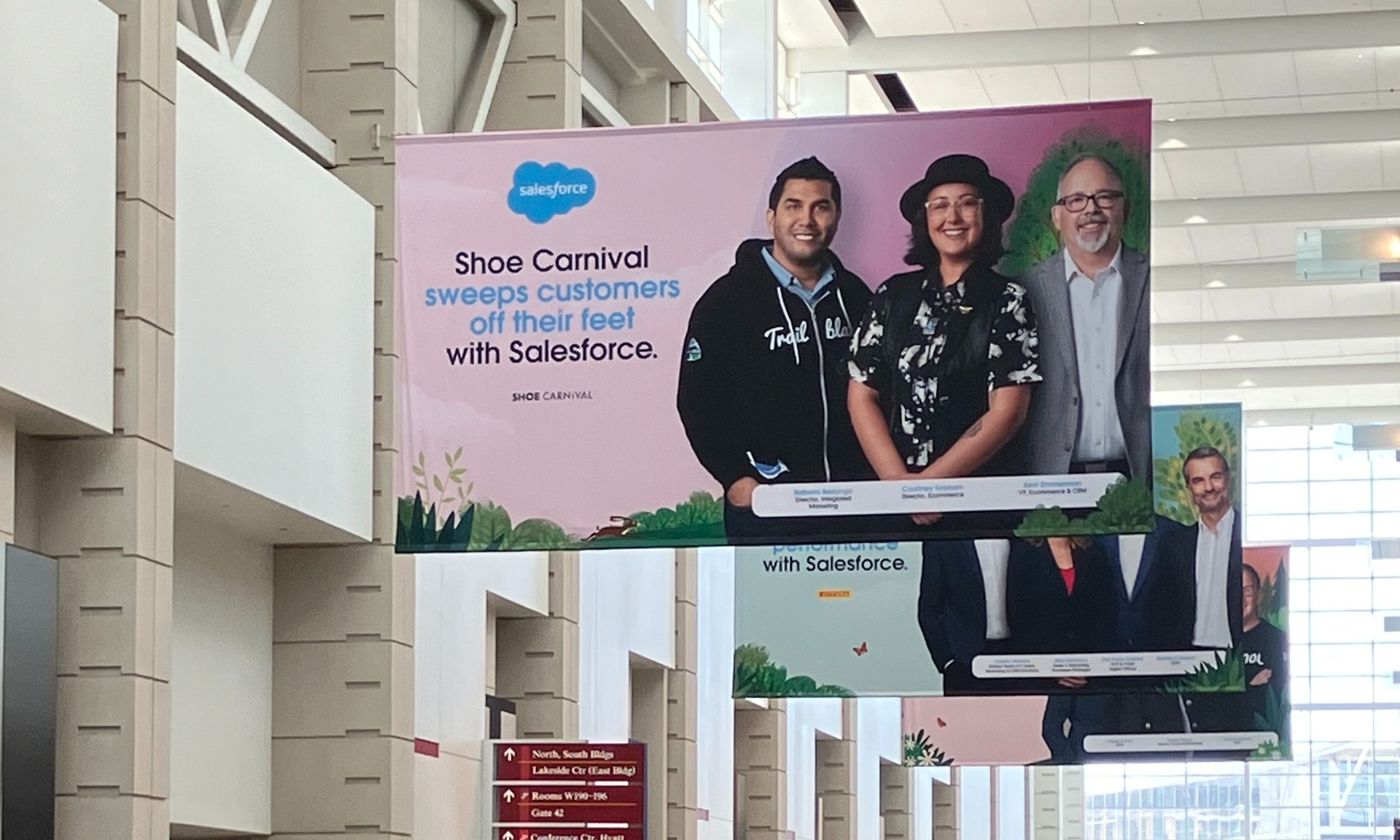
Salesforce launched a collection of new, generative AI-related products at Connections in Chicago this week. They included new Einstein Copilots for marketers and merchants and Einstein Personalization.
To better understand, not only the potential impact of the new products, but the evolving Salesforce architecture, we sat down with Bobby Jania, CMO, Marketing Cloud.
Dig deeper: Salesforce piles on the Einstein Copilots
Salesforce’s evolving architecture
It’s hard to deny that Salesforce likes coming up with new names for platforms and products (what happened to Customer 360?) and this can sometimes make the observer wonder if something is brand new, or old but with a brand new name. In particular, what exactly is Einstein 1 and how is it related to Salesforce Data Cloud?
“Data Cloud is built on the Einstein 1 platform,” Jania explained. “The Einstein 1 platform is our entire Salesforce platform and that includes products like Sales Cloud, Service Cloud — that it includes the original idea of Salesforce not just being in the cloud, but being multi-tenancy.”
Data Cloud — not an acquisition, of course — was built natively on that platform. It was the first product built on Hyperforce, Salesforce’s new cloud infrastructure architecture. “Since Data Cloud was on what we now call the Einstein 1 platform from Day One, it has always natively connected to, and been able to read anything in Sales Cloud, Service Cloud [and so on]. On top of that, we can now bring in, not only structured but unstructured data.”
That’s a significant progression from the position, several years ago, when Salesforce had stitched together a platform around various acquisitions (ExactTarget, for example) that didn’t necessarily talk to each other.
“At times, what we would do is have a kind of behind-the-scenes flow where data from one product could be moved into another product,” said Jania, “but in many of those cases the data would then be in both, whereas now the data is in Data Cloud. Tableau will run natively off Data Cloud; Commerce Cloud, Service Cloud, Marketing Cloud — they’re all going to the same operational customer profile.” They’re not copying the data from Data Cloud, Jania confirmed.
Another thing to know is tit’s possible for Salesforce customers to import their own datasets into Data Cloud. “We wanted to create a federated data model,” said Jania. “If you’re using Snowflake, for example, we more or less virtually sit on your data lake. The value we add is that we will look at all your data and help you form these operational customer profiles.”
Let’s learn more about Einstein Copilot
“Copilot means that I have an assistant with me in the tool where I need to be working that contextually knows what I am trying to do and helps me at every step of the process,” Jania said.
For marketers, this might begin with a campaign brief developed with Copilot’s assistance, the identification of an audience based on the brief, and then the development of email or other content. “What’s really cool is the idea of Einstein Studio where our customers will create actions [for Copilot] that we hadn’t even thought about.”
Here’s a key insight (back to nomenclature). We reported on Copilot for markets, Copilot for merchants, Copilot for shoppers. It turns out, however, that there is just one Copilot, Einstein Copilot, and these are use cases. “There’s just one Copilot, we just add these for a little clarity; we’re going to talk about marketing use cases, about shoppers’ use cases. These are actions for the marketing use cases we built out of the box; you can build your own.”
It’s surely going to take a little time for marketers to learn to work easily with Copilot. “There’s always time for adoption,” Jania agreed. “What is directly connected with this is, this is my ninth Connections and this one has the most hands-on training that I’ve seen since 2014 — and a lot of that is getting people using Data Cloud, using these tools rather than just being given a demo.”
What’s new about Einstein Personalization
Salesforce Einstein has been around since 2016 and many of the use cases seem to have involved personalization in various forms. What’s new?
“Einstein Personalization is a real-time decision engine and it’s going to choose next-best-action, next-best-offer. What is new is that it’s a service now that runs natively on top of Data Cloud.” A lot of real-time decision engines need their own set of data that might actually be a subset of data. “Einstein Personalization is going to look holistically at a customer and recommend a next-best-action that could be natively surfaced in Service Cloud, Sales Cloud or Marketing Cloud.”
Finally, trust
One feature of the presentations at Connections was the reassurance that, although public LLMs like ChatGPT could be selected for application to customer data, none of that data would be retained by the LLMs. Is this just a matter of written agreements? No, not just that, said Jania.
“In the Einstein Trust Layer, all of the data, when it connects to an LLM, runs through our gateway. If there was a prompt that had personally identifiable information — a credit card number, an email address — at a mimum, all that is stripped out. The LLMs do not store the output; we store the output for auditing back in Salesforce. Any output that comes back through our gateway is logged in our system; it runs through a toxicity model; and only at the end do we put PII data back into the answer. There are real pieces beyond a handshake that this data is safe.”
-

 SEO7 days ago
SEO7 days agoGoogle’s Revamped Documentation Shows 4 Reasons To Refresh Content
-
SEARCHENGINES5 days ago
Daily Search Forum Recap: August 26, 2024
-

 SEARCHENGINES7 days ago
SEARCHENGINES7 days agoGoogle Ranking Bug Fixed, August Core Update Swings, AI Overviews, Google Ads Bug & More
-

 WORDPRESS7 days ago
WORDPRESS7 days agoHow to Secure Your WordPress Store
-
SEARCHENGINES4 days ago
Daily Search Forum Recap: August 27, 2024
-
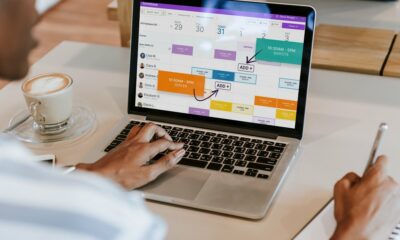
 AFFILIATE MARKETING7 days ago
AFFILIATE MARKETING7 days agoBusiness Owners are Batting 1,000 With This All-in-One Management Hub
-
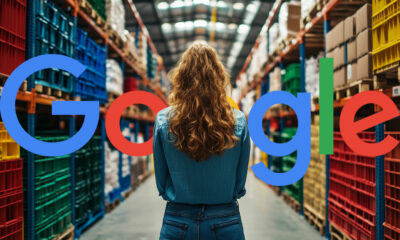
 SEARCHENGINES6 days ago
SEARCHENGINES6 days agoGoogle Migrating All To Google Merchant Center Next By September
-

 WORDPRESS5 days ago
WORDPRESS5 days ago10 Best StudioPress Alternatives (Genesis Framework)


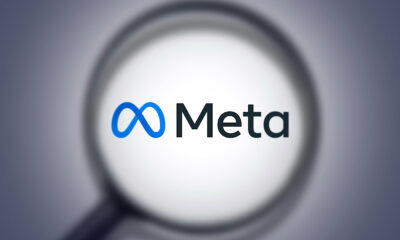

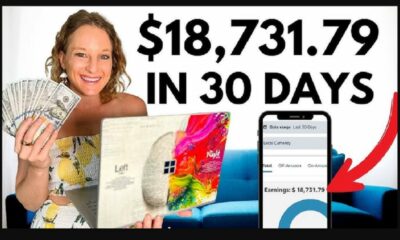











You must be logged in to post a comment Login